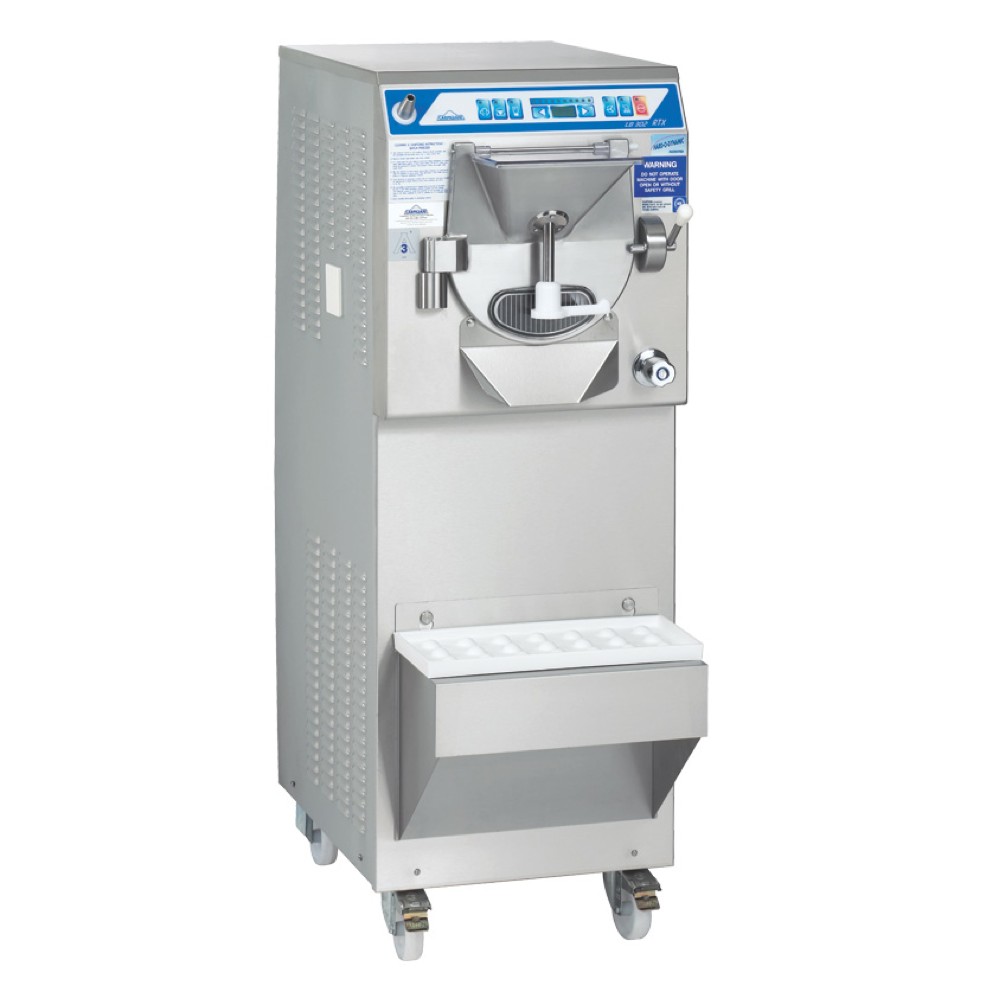As we already discussed here, gelato machines will be your biggest investment (money wise) while opening your Gelateria.
The best gelato machines are all made in Italy & then outfitted for the US market both with local certifications (NSF) & power requirements.
The certification issue is the reason why in the US we have older equipment available & not the latest & greatest (in general): the NSF certification is expensive and it takes time, so for example for Carpigiani in the US you can really only buy batch freezers & pasteurizers that were launched almost or more than 10 year ago, but they still sell them with “new” prices. Smart Italians ;)
They work great, don’t get me wrong, but they are already old when they get to your establishment!
Other companies offer newer equipment, like Cattanriga, Bravo or Coldelite so keep that in mind if that’s what you are looking for. They also came to the US market more recently so that’s why they had to certify more recent machines, will see what happens as the years go by.
The most important things that you need to decide & understand before placing the order are: power & cooling requirements.
Power requirements
All gelato machines run on 3phase, not on your regular single phase & normally they need to be hardwired (meaning there is no plug). You can build/install a plug if needed, but will cost you a lot more. If you don’t have 3phase in your establishment you will have to run it (could be really expensive) or you will need a power converter (which will convert 1phase to 3phase).
The power converter is really not an ideal nor efficient solution, but if you have no other choice will do the job.
Keep this in mind while shopping for your location, especially in older downtowns/buildings where 3phase might not be available at all.
Cooling requirements
Here there is really 2 ways you can go: air or water cooled.
Gelato machines put out TON of heat (especially pasteurizers while in “cooling” mode) and here your choice might be dictated by the local authorities (you might not be able to use water cooled unless you install a water recycle system or you live in a desert area with water restrictions..) or simply by the costs of operation (is it more expensive to waste water for cooling, or to pay more in electricity to run a larger AC unit in the kitchen?). Either way keep this in mind: water cooled is less noisy, less problematic & more effective/efficient, period but you will normally need to install a floor drain with air gap for drainage & bring water pipes to the machine/s; also the machine cannot be moved around (some might need the mobility).
If you cannot do water keep this in mind for air cooled ones: the batch freezer is manageable with a large AC on top of it because it does not run continuously & gelato cycles are pretty short normally (7-12 minutes), but for good efficiency you must keep the room below 80F or 27C. You can also place a vent right behind the machine that “sucks” the hot air out of the kitchen right away minimizing heat.
If you need a pasteurizer I highly recommend water cooled ones, because during the cooling cycle, that lasts 60-70 minutes, they continuously pour out tons of heat that is hard to manage. A 60 Liter pasteurizer can be doable air cooled (maybe to run later in the day after production), but for 120 Liter forget it.
With larger machines like a trittico Bravo or “all in one” Coldelite you might not even have an air cooled option, so water will be your only way to go (if you can use it).
With air cooled machines you also have a lot more vibrations (big fans) and more copper pipes and all this can lead to more leaks and issues down the road.
Now you know something really important, that will help you making better decisions & save money.
If you need any help putting together your dream gelato lab, don’t hesitate to reach out!
Vincenzo
